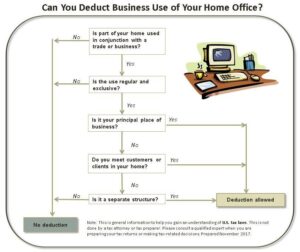If you’re anything like me paperwork, particularly organizing and managing receipts, is not my strong suite. However, as a small business owner it is critical that you have an organized system for handling your receipts.
There are numerous ideas and systems for organizing and managing your business receipts. Finding the one that is right for you is KEY. Once you have your process in place, it becomes almost second nature and you can “rinse and repeat”. The following process is one among many. It is relatively simple, inexpensive and follows a logical sequence. The basic steps are:
- Step 1: Keep and Label All Receipts
- Step 2: Keep a Current Filing System
- Step 3A: Digitize Receipts … or
- Step 3B: Keep Monthly Envelopes
- Step 4: Process Receipts
Let’s take a closer look at each of these steps. Perhaps, it is the right system for you!
Step 1: Keep and Label All Receipts
It is critical to keep all of your business receipts. On every receipt be sure to make a short, but specific note, as to the business purpose. For example, writing “Dinner Expense” is quite vague. But writing “Dinner Meeting with “Client Name” is more specific.
Some folks immediately make a note on their receipt. Others prefer to make a note at the end of the day as they empty their wallet. Whatever your method, the sooner the note is made the better. Should you have a personal and business expense on the same receipt, be sure to highlight the business expense and make a separate total.
Step 2: Keep a Current Filing System
Now that you have your receipts for the day specifically labelled where do you put them? It is important to develop a process of filing them in a way that suits you. Some people prefer to have an “IN” basket on their desk. Should you select this method, do not have a basket that is too large. First, it takes up too much space on your desk. Second, if it is too large you may be tempted to allow the receipts to pile up over time. Oh, what a job you will have if you do have them pile up.
Should an “In” basket be not your cup of tea, you could have a weekly envelope, or for that matter a weekly Ziplock bag marked with the date. Whatever means you select, be sure to make it convenient.
Step 3A: Digitize Your Receipts
This step is optional, but boy is it convenient! Within the last number of years, there has been a shift away from filing paper records to digitizing paper documents and receipts. Digitizing is great for two reasons. First, it saves on space, and second it is helpful because receipts have a tendency to fade with time.
There are two ways one can go paperless. The first is scanning your receipts. You may opt to purchase an inexpensive scanner. At the end of the week or month, take the receipts from your basket, envelope(s) or Ziplock and scan them. Another option is to purchase a scanning app for your smart phone. Technology has come a long way!
The second way to adopt a paperless system is to take a picture of your receipt with your phone. There are a number of apps available to assist you. Again, be sure to make a note on your receipt prior to scanning or taking a photo. In addition, thee scan or photo must capture the whole receipt clearly with the date, business name, and amount of purchase.
If, and only If you decide to take Step 3, you can then get rid of your receipts. However, be sure you have scanned them before destroying them. If you do not take step 3 you will want to have a monthly system of some sort. See below.
Step 3B: Monthly Envelope(s)
If you opt not to digitize you will want a place to file your weekly envelopes/Ziplock. A 6″ X 9″ envelope will work well. Be sure to label the exterior with a marker noting the month and year.
Step 4: Process Your Receipts

Now that you have your receipts collected, organized/digitized it is time to process them. As a new small business owner you may do this yourself on a weekly or monthly basis. Others will have a bookkeeper to process the receipts and invoices. Regardless you will want to have a bookkeeping program to assist you with this process.
Pro-Ledger Online is an easy & inexpensive cloud-based bookkeeping software for sole proprietors, professionals & freelancers. No bookkeeping knowledge required.
As you process your receipts/invoices you will want to categorize them. There are numerous categories one can use. Here are a few:
- Advertising and Promotion
- Travel
- Meals and Entertainment
- Communication (Internet and Phone)
- Rent
- Utilities
- Supplies
- Insurance
By doing this you will be sure to take the stress out of the process at tax time.
NOTE: If you did not digitize you receipts you will want to take the following final step.
Step 5: Keep a Yearly File Box
A regular file box will do. Be sure to mark the year on the outside. Once you have processed the monthly envelope place it in the box. Make sure to place this filing box in a secure location.
Whatever system you select for organizing, managing and processing receipts be sure to BE CONSISTENT! This is critical for success. Anything new takes time to master. It will take discipline to start and you may have to tweak your process along the way. However, before you know it what once was new will become natural.
Final Suggestion
At the outset I mentioned that I am not fond of bookkeeping. If you are like me, it is helpful to find something that will make this process enjoyable. Often I will play music, have my favorite beverage and a candle burning to create a pleasant atmosphere. Figure out what will enhance the experience for you. Happy Bookkeeping.
___________________________________________________________________________________________________




